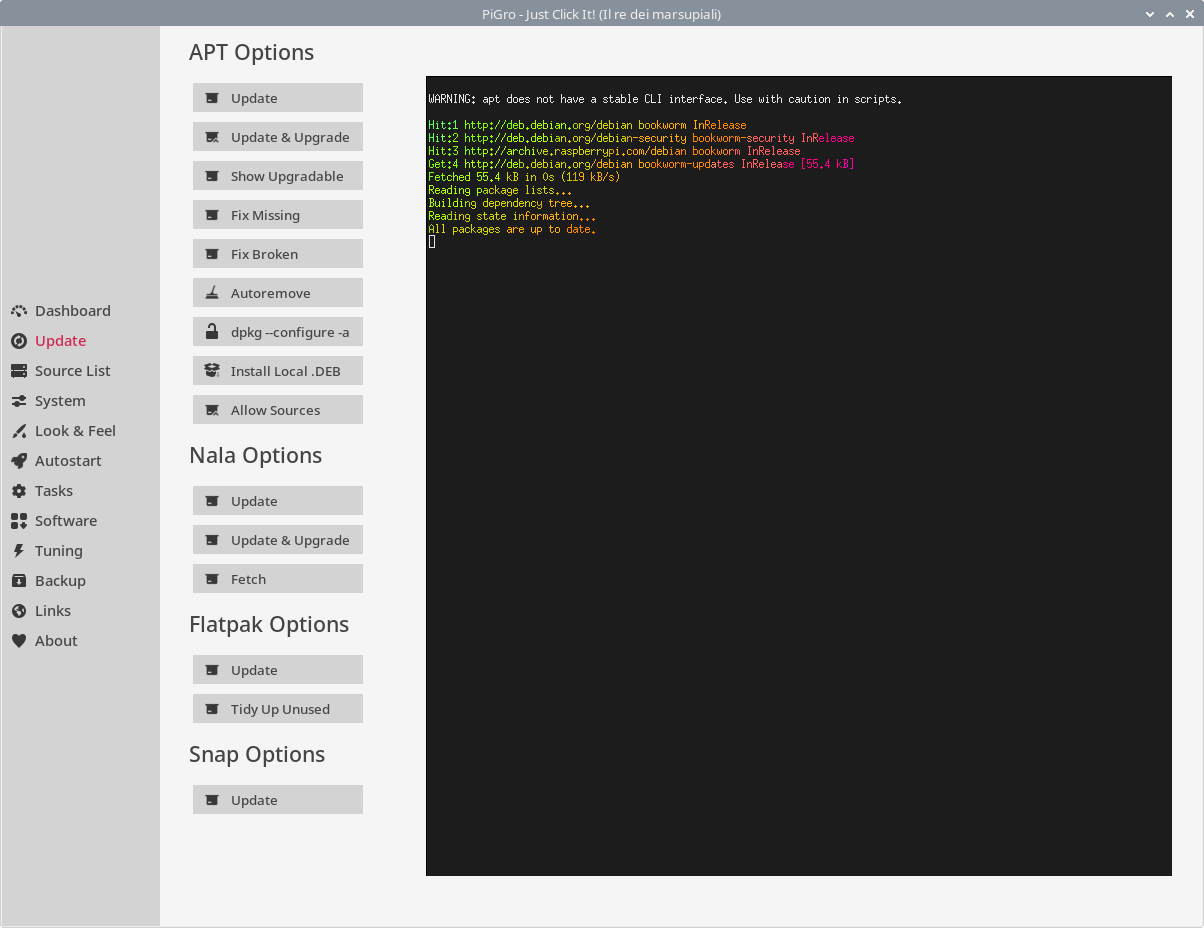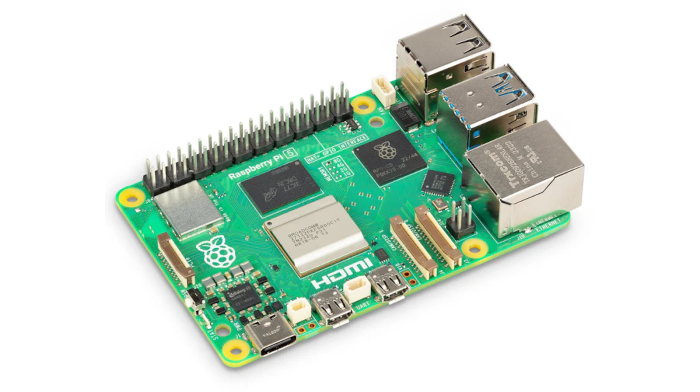Last Updated on June 17, 2025
Update

Let’s go through each of the options here. They can all be actioned from the command-line, but PiGro performs the same function without needing to open a terminal or remember the specific command.
APT Options
Update – command for updating the package list.
Update & Upgrade – command for updating the package list and updating installed packages.
Show Upgradeable – command for displaying upgradeable packages.
Fix Missing – command for fixing missing dependencies.
Fix Broken – command for fixing broken packages.
Autoremove – command for removing automatically installed but no longer required packages.
dkpkg --configure -a – command for configuring all unpacked but unconfigured packages.
Install Local .DEB – command for installing a local .DEB package.
Allow Sources – command for allowing software from additional sources.
This section gives simple access to the major APT commands I typically use.
Nala Options
Update
Update & Upgrade
Fetch
Nala fetch checks if your distro is either Debian or Ubuntu. If so, it will go get all the mirrors from the respective master list. Once done, it tests the latency and scores each mirror. Nala then chooses 3 mirrors (configurable) and writes them to a file.
Flatpak Options
Flatpak is a utility for software deployment and package management for Linux. It provides a sandbox environment in which users can run application software in isolation from the rest of the system. There’s really good support for ARM64 (the architecture the Pi 5 use) with Flatpak.
Update – the command updates all installed Flatpak applications. It checks for updates to the installed Flatpak packages and installs the latest versions available from the respective repositories.
Tidy Up Unused – removes Flatpak runtimes and extensions that are no longer associated with any installed applications.
Snap Options
Snap is a software packaging and deployment system developed by Canonical for operating systems that use the Linux kernel and the systemd init system.
Update – updates the installed Snaps on a system.
Next page: Page 3 – Source List
Pages in this article:
Page 1 – Introduction / Dashboard
Page 2 – Update
Page 3 – Source List
Page 4 – System
Page 5 – Look & Feel
Page 6 – Autostart
Page 7 – Tasks
Page 8 – Software
Page 9 – Tuning
Page 10 – Backup
All articles in this series:
| Raspberry Pi 5 Series | |
|---|---|
Hardware | |
| iRasptek Starter Kit | All the kit you need to get started with the Pi 5 |
| Pironman 5 Case Review | Transform the Pi 5 into a beautiful desktop mini PC |
| Passive Cooling the Pi 5 | Passively cool your Pi 5 the right way. Silent yet cool |
| Benchmarking | Benchmarking the Pi 5 against an Intel N100 mini PC |
| Overclocking | Let's increase the clock speed of the BCM2712 SoC |
| Power Consumption | Compare the power consumption of the Pi 5 with Intel Mini PCs |
| 2.5Gbps Networking | Improving the wired performance of the Pi 5 |
| WiFi | Improve WiFi performance of the Pi 5 |
| Desktop PC | Is the Pi 5 good value compared to an Intel N100 Mini PC? |
Configuration | |
| raspi-config | Useful text-based tool to configure the Pi 5 |
| PiGro | GUI tool that streamlines the process of managing the Pi 5 |
| Increase Swap Memory Size | Increase the swap size from 512MB to 2GB |
| ZRAM swapdrive | Simple script to use a ZRAM swapdrive instead of a swapfile |
Software | |
| Installing Software | Different ways to install software on the Pi 5 |
| df snap pollution | Replace df with dysk |
| Ollama GUI | Running Large Language Models on the Pi 5 |
| Music Players | GUI and TUI music players explored |
| Internet Radio | Exploring the best options for both GUI and TUI software |
| Many software articles are planned. Stay tuned! | |
